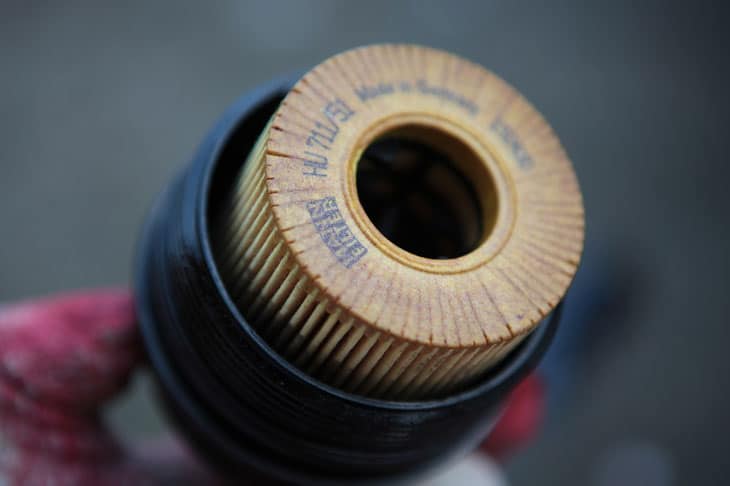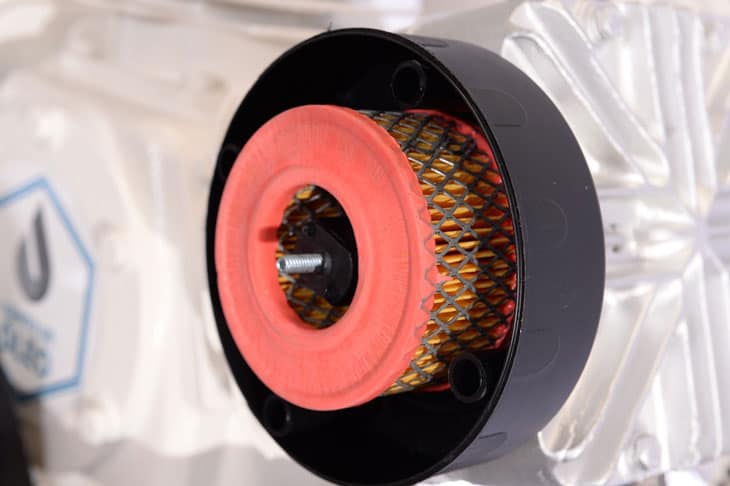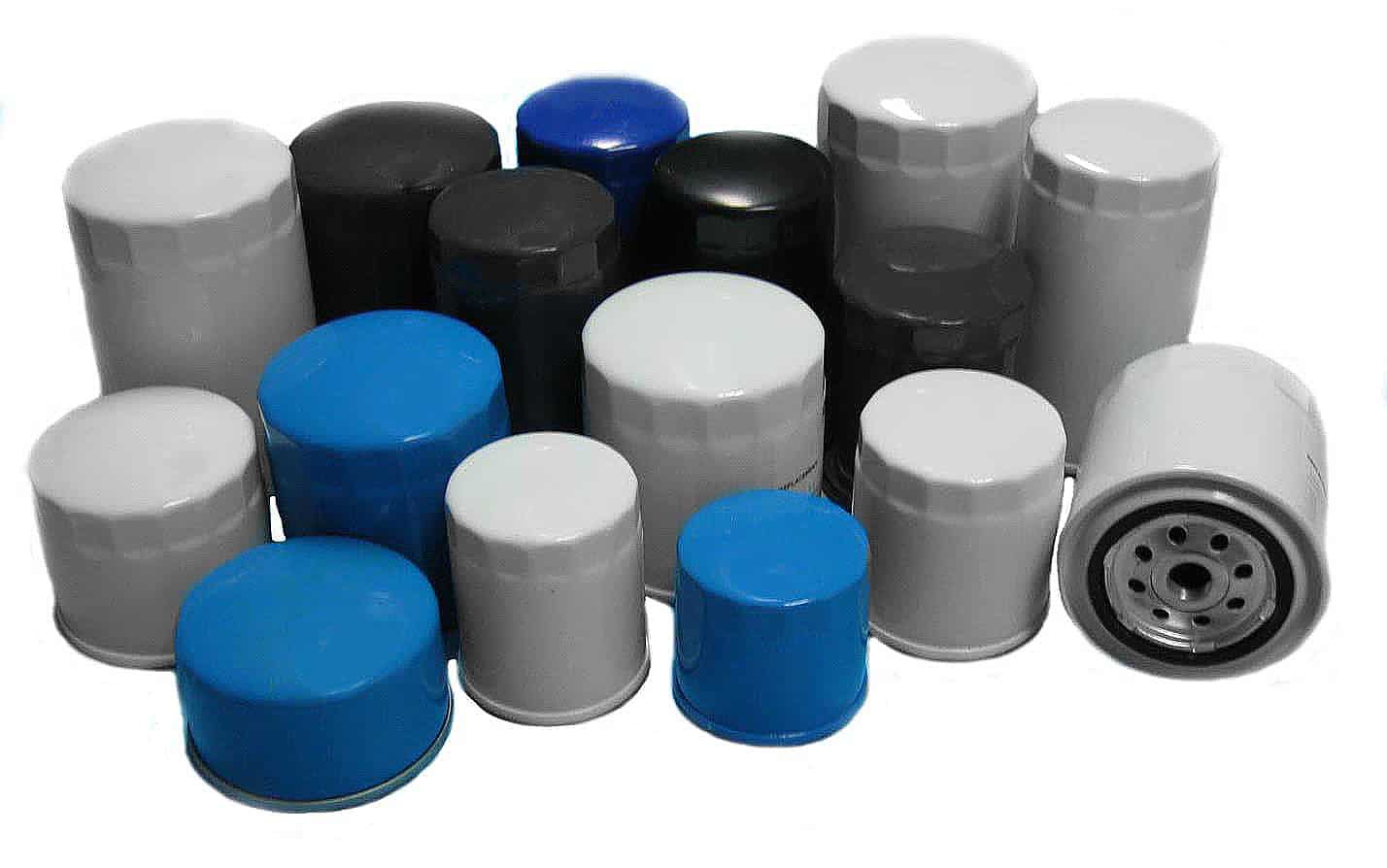Table of Contents
*This post may contain affiliate links. As an Amazon Associate we earn from qualifying purchases.
Let’s face it; cars need regular maintenance if we don’t want to buy a new one every few years. To do that, though, you need to change your car’s oil on a regular basis, which also means changing the oil filter. If you’re thinking about doing this yourself, you might consider buying an STP oil filter. STP is a leading brand of automotive parts and accessories, and the brand has a significant presence in the auto racing world. They’re a brand you can trust.
Even so, what does an STP oil filter do? How are these oil filters different from their competitors? Which ones will extend your engine’s life the furthest? Before you buy an STP oil filter, you ought to know whether it’s the best filter for your needs. Fortunately, we have all the information you need to make the right decision.
What Is an STP Oil Filter?

Image from Pixabay
An STP oil filter is a brand of oil filter that fits most cars on the road today. STP itself has been around for over 60 years. The company got its start with three guys manufacturing an oil treatment that helped prevent oil from getting too thin at high temperatures. Ever since then, the company has been a leader in automotive parts and additives.
HOW OIL FILTERS WORK
Oil filters remove impurities from the oil that runs through your engine. Oil gets dirty just like anything else in a car, and those particles can grind down your engine’s components and cause severe damage. With an oil filter, you slow this process down considerably. The better the filter, the cleaner your oil stays.
That’s not to say that even with the best oil filter, you’ll never have to change your oil or filter. However, a good, high-quality filter will better protect your engine than a low-quality filter over the same number of miles.
What Are Oil Filters Made of?

Image from Pixabay
All oil filters have a tapping plate, an anti-drain back valve, the filter material itself, the creases in that material, a center tube, a relief valve, an end disc, and a retainer.
TAPPING PLATE
The tapping plate is the entry and exit point for your car’s oil. The holes around the edge are where the oil flows in, and the center hole is where the oil flows out. The center hole is also threaded so that you can attach the filter to your car.
ANTI-DRAIN BACK VALVE
The anti-drain back valve is essentially a rubber or silicone flap that prevents oil from draining into the filter when your engine is off.
FILTER MEDIUM
This material is what actually filters your oil. It’s porous, and made of microscopic cellulose, glass, or polyester fibers designed to catch and trap dirt, tiny shavings of metal, and more. The filter medium is generally soaked in resin to strengthen and stiffen it.
PLEATS
Oil filter manufacturers fold the filter medium into pleats inside the filter. This creates a lot more surface area for the oil to pass through. However, the thicker the material, the fewer pleats you’ll find.
CENTER TUBE
The center tube gives structure to the entire filter. Everything attaches to the center tube, and filtered oil flows through the tube back into your engine.
RELIEF VALVE
Oil filters have relief valves because cold oil can be too thick to move through the filter and into your engine. Once your engine creates sufficient pressure, the relief valve opens, which then allows unfiltered oil through the center tube and into the engine. It’s better than having no oil in your engine at all when you start it.
END DISC
Oil filters have a disc on each end. These discs prevent unfiltered oil from leaking into the center tube and is usually made of cardboard, fiber or metal. Some oil filters use a sealant to create a solid end disc.
RETAINER
An oil filter’s retainer is essentially a leaf spring. It holds both the filter medium and the end disc tightly against the tapping plate. This prevents leaks and keeps your filter from falling off your car.
What Materials Does Stp Use for Its Oil Filters?

Image from Pixabay
STP oil filters generally use metal for their end discs, center tubes, and tapping plates. Cheap filters often use cardboard for the end discs and plastic for the center tubes. STP also uses silicone anti-drain back valves in their extended life filters, instead of rubber, because silicone withstands more extreme temperatures better than rubber does.
They make their filter medium out of synthetic fibers, rather than cellulose, too, which also makes them more durable than cheaper filters. An STP oil filter is generally capable of filtering out particles as small as 20 microns.
Which Cars Can Use an Stp Oil Filter?

Image from Pixabay
STP has oil filters that fit most cars, even older cars. If you check out AutoZone’s website and run a search for “STP oil filter,” you can then customize your search for your car’s year, make, and model. Chances are, you’ll find at least one STP oil filter that fits your vehicle.
How Do People Feel About Stp Oil Filters?

Image from Pixabay
While STP is a well-known automotive brand, they don’t sell their oil filters in very many places, either online or off. As such, it was difficult for us to find information on how customers feel about STP oil filters. However, Autozone’s website does have some customer feedback for these. People generally say they feel that STP provides good value for their money. One person said that their STP oil filter fits their car perfectly, preventing any leaks. Another said that they’ve used STP many times and have never felt dissatisfied. Several people use them for every vehicle they own no matter its age.
One person says that they only buy these filters when they can get them for free with a jug of STP oil. That speaks to their pricing, but with oil filters, you get what you pay for.
PRICING
Since there’s such a wide range of STP oil filters on the market, you’ll find a wide range of prices. Generally, though, you can buy an STP oil filter for anywhere from $5 to $16. The cost you pay depends on the size you need and how common that size is.
HOW WE REVIEWED
We went to STP’s website to gather company history and information, and specific information on their products. For information on what materials an STP oil filter uses, we used a YouTube video in which a mechanic took apart an oil filter and went through every component. Finally, we gathered pricing information and customer reviews from AutoZone’s website.
[amazon box=”B0009H529I, B003L2XPBK, B004D5LAFC” template=”table”]
How Do Stp Oil Filters Stack Up Against the Competition?
STP is a big name in the automotive industry, but there are other big names too. Like STP, those companies also make quality parts. How does an STP oil filter compare to its competition?
[amazon link=”B0009H529I” title=”FRAM PH2 Extra Guard Passenger Car Spin-On Oil Filter” /]
[amazon box=”B0009H529I”]
People often prefer FRAM oil filters because they’re cheaper than other filters. While STP oil filters cost between $5 and $16, FRAM filters cost anywhere from just $4 to over $25. If your car uses a common filter size, FRAM’s filters will almost always be slightly cheaper. That gives you more significant savings over the long run. However, you sacrifice quality for affordability when you buy FRAM filters. This is especially true if you buy their Extra Guard and Tough Guard filters. FRAM makes its two most popular filters with cardboard end discs instead of metal ones. They also use rubber for valves instead of silicone. As a result, FRAM filters aren’t as durable as STP filters. You’re more likely to have problems with leaks, plus, they may not last as long as advertised.
Even so, people on AutoZone give FRAM filters reasonably high marks. Several people say they’ve never had problems with them, and some say they’ve used them for decades without a problem.
However, some say they’ve purchased FRAM filters with anti-drain back valves that don’t work. That starves the engine of oil on startup and causes significant damage if it happens too frequently. On average, FRAM filters get 4.5 out of 5 stars on AutoZone’s site.
[amazon link=”B004D5LAFC” title=”Mobil 1 M1-206 Extended Performance Oil Filter” /]
[amazon box=”B004D5LAFC”]
You might recognize Mobil from the NASCAR racing circuit. They’ve got experience in the automotive industry that matches few others’. Mobil makes its own oil, its own filters, and other accessories, so we would be remiss if we didn’t compare STP filters to Mobil filters.
Mobil’s oil filters are both lightweight and durable. In fact, if you equate the weight of a filter to its quality, you might find yourself missing out on a good filter. These filters use a synthetic filter medium, putting them on par with STP’s filters, and they filter out particles with similar efficiency.
Mobil’s filters are also designed to withstand enormous heat and pressure with its silicone valves and tight fits. Overall, customers who bought Mobil oil filters through Amazon feel that they’re among the best on the market. They’re a bit more expensive than STP filters, and a few customers have had problems tightening them properly or getting them off because they’re difficult to grip. Overall, though, they give Mobil’s filters 4.6 out of 5 stars on Amazon.
[amazon link=”B003L2XPBK” title=”Royal Purple” /]
[amazon box=”B003L2XPBK”]
Royal Purple is like the Porsche of oil filters. It’s more expensive than other filters on the market. However, it has everything you could ever imagine performance-wise and durability-wise. These filters work well with conventional oil, synthetic oil, and oil blends.
Royal Purple’s filter medium is micro-glass, which catches particles smaller than most other oil filters out there. As such, it provides some of the best protection there is for your car’s engine. Royal Purple also uses silicone in place of rubber, and high-quality steel instead of cardboard and plastic. If you want an excellent oil filter, then Royal Purple is where it’s at.
Even people who are extremely picky about the types of filters they put in their vehicles like Royal Purple. Whether they have a ton of miles on their car or they’re driving something new, Royal Purple gives vehicle owners precisely what they’re looking for.
Their major drawback is pricing — you do pay more for their oil filters than you do for pretty much any other brand of filter out there. Besides its price, Royal Purple’s major drawback is that it works best with synthetic oils. The truth is that synthetic oil is better than any other oil because it’s cleaner than conventional oil and blended oil. However, generally, even with conventional oil, Royal Purple works a bit better than other filters on the market. On Amazon, they get 4.7 out of 5 stars.
PROS AND CONS OF AN STP OIL FILTER
Now that you’re processing all this information, below is a (very) quick rundown of the pros and cons of an STP oil filter.
Pros
- Well known brand with lots of experience in the automotive industry
- High-quality parts
- Manufactures oil, and oil and fuel additives, in addition to filters
- Suitable for most everyday cars
- STP oil filter will last as long as advertised
Cons
- Hard to find online
- Seems only to be sold through AutoZone — not even available through Amazon
- Other STP products are widely available, making STP’s limited availability frustrating
- Price is a little higher than other common brands
Bottom Line
If you can find an STP oil filter that fits your car, then you’ll probably be in good shape using one. However, it’s difficult to recommend them over other brands when they’re hard to find, and when customer feedback on them is even harder to find. However, if you prefer STP oil and its other automotive products, then finding an STP oil filter to go with all of that may well be worth it.

